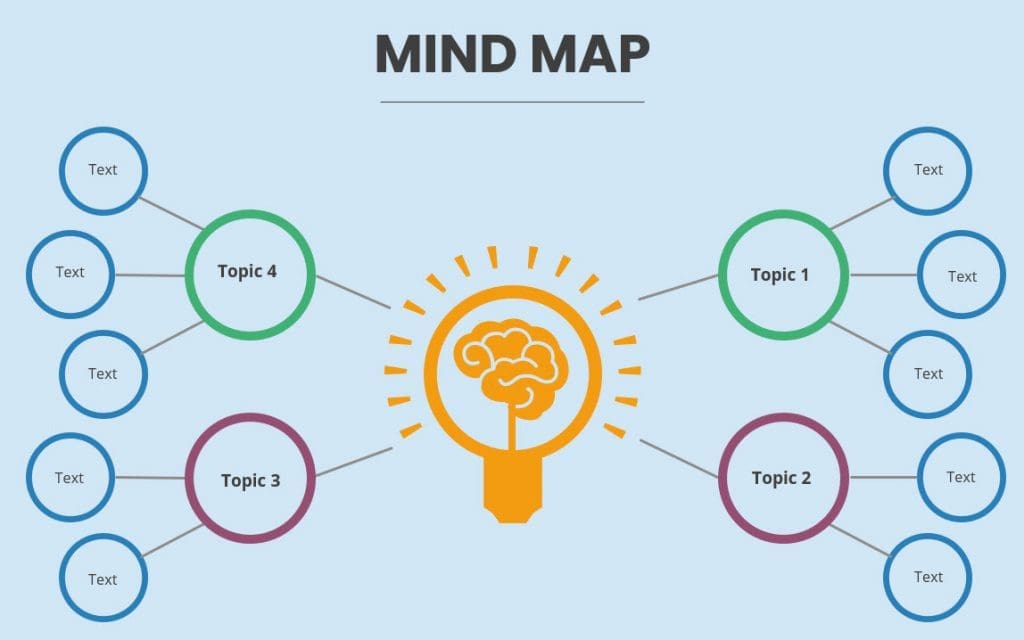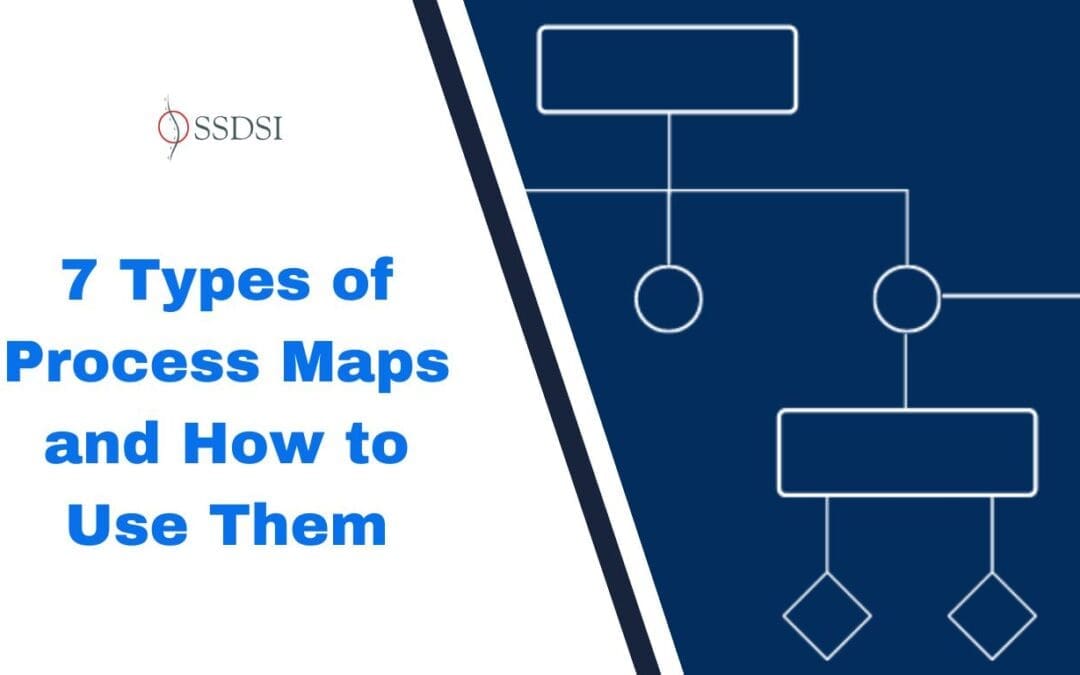Table of contents
7 Types of Process Maps and How to Use Them
In the dynamic landscape of organizational efficiency and improvement, understanding the various types of process mapping and their intricacies is crucial. Whether you’re navigating the complexities of a training process map or seeking insights into how to create process maps effectively, exploring the diverse types becomes a foundational step. This article delves into the world of types of process mapping, shedding light on the different types, and the nuances of various process mapping techniques, and providing valuable guidance on how to create process maps and utilize these visual tools. Join us on this exploration as we unravel the significance of types of process mapping and demystify the art of it for enhanced organizational effectiveness.
They are indispensable tools for professionals across various industries. They provide a visual representation of workflows, helping organizations streamline operations, identify bottlenecks, and enhance efficiency. In this article, we will explore the different types of them and delve into how each can be effectively utilized.
Understanding Process Maps

A process map is a visual representation of a sequence of steps or activities within a business operation. It outlines the flow of information, materials, or tasks from start to finish. Key components include input, output, and feedback loops. These maps offer a comprehensive overview, enabling professionals to grasp the intricacies of their workflows.
Benefits of Using it
The benefits of using it are vast. They provide clarity and transparency, making it easier for teams to understand complex processes. Creating process maps also aids in identifying inefficiencies, reducing errors, and improving overall performance. Additionally, they serve as valuable training tools, allowing new employees to quickly grasp the intricacies of their roles.
Types of Process Maps
Exist various types of process mapping, here are 7 of them:
1. Flowcharts
Flowcharts are one of the most common types of process mapping. They use symbols to represent different process elements and illustrate the flow of tasks or information. Flowcharts are versatile and can be applied in various industries, from manufacturing to service-oriented businesses, types of process mapping can visually represent the steps and decision points, and flowcharts offer a clear overview of how the task functions from start to finish. Data collected through flowcharts can be crucial for measuring process performance and establishing baseline metrics.
2. Swimlane Diagrams
Swimlane diagrams, also known as cross-functional flowcharts, divide processes into lanes to represent different departments, roles, or individuals involved in the workflow. This type enhances visibility and accountability by clearly outlining responsibilities across various entities. These diagrams use distinct “swimlanes” or parallel lines to represent different entities involved in a process, making it easy to understand the flow of activities and the collaboration between various stakeholders.
3. Value Stream Maps
Value stream maps focus on the end-to-end operation of delivering a product or service, emphasizing value-added and non-value-added activities. This type is particularly valuable in lean manufacturing and service industries, helping organizations identify and eliminate waste.
4. Gantt Charts
Gantt charts are visual representations of project schedules, mapping out tasks against time. While primarily used in project management, Gantt charts can also serve effectively, providing a timeline view of activities and their dependencies.
A Gantt chart is a popular project management tool that provides a visual representation of a project schedule. It illustrates the timeline of tasks or activities, their dependencies, and the overall progress of a project. Henry L. Gantt, an American engineer and management consultant, developed the Gantt chart in the early 20th century, and it has since become a widely used technique in project planning and control.
They are particularly useful for planning, scheduling, and tracking progress in projects of all sizes and complexities across different industries.
5. Mind Maps
Mind maps are creative and non-linear process maps that use branches to connect different ideas or elements of them. They are particularly useful for brainstorming sessions and capturing the diverse aspects of a complex process.
One of the most valuable aspects of mind maps is their ability to unleash creativity and promote holistic thinking. Mind maps provide a visually dynamic and non-linear representation of ideas, allowing individuals to explore, connect, and expand upon concepts in a free-flowing manner.
By capturing thoughts in a central node and branching out into related ideas, mind maps encourage a comprehensive exploration of a topic. This spatial organization facilitates a deeper understanding of relationships between different elements, fostering creativity and innovation. The visual nature of mind maps engages both hemispheres of the brain, enhancing comprehension and memory retention.
6. Data Flow Diagrams (DFDs)
DFDs illustrate the flow of data within a system. They highlight how information moves between processes, data stores, and external entities. DFDs are valuable for understanding data dependencies and communication pathways within a process. By visualizing the flow of data and processes, DFDs aid in the early identification of potential errors or inconsistencies in the system. This proactive approach allows for error prevention rather than reactive correction. This clarity enhances communication, supports system development, and empowers stakeholders to make informed decisions about system design and improvement.
7. Business Process Model and Notation (BPMN)
BPMN is a standardized notation system that provides a common language for process modeling. It uses symbols to represent different elements of a process, making it easier for stakeholders to understand and collaborate on complex workflows. BPMN serves as a powerful tool for process modeling, analysis, and communication, offering a common framework that transcends organizational and industry boundaries. This clarity enhances communication among stakeholders, including business analysts, process owners, and IT professionals, fostering a shared understanding of complex business processes.
How to Create and Use Process Maps

Creating a process map involves several key steps:
- Identify the Process: Clearly define the scope and boundaries of the process you intend to map.
- Select the Relevant Process Map: Choose the appropriate type of it based on the nature of the problem. Different types of them, such as flowcharts, swimlane diagrams, or value stream maps, may be more suitable for specific issues.
- Review the Current Process Map: If a process already exists, review it to gain a comprehensive understanding of the current state of the operation. Identify key steps, decision points, and interactions between different elements.
- Gather Information: Collect relevant data and metrics associated with the problem. This may include cycle times, error rates, resource utilization, or any other performance indicators related to the process.
- Use the Right Symbols: Choose appropriate symbols and notations for your chosen type of process map.
- Create the Map: Using software or even pen and paper, start mapping out the sequence of activities and their relationships.
- Review and Refine: If necessary, iterate the problem-solving process. Analyze the updated map, gather feedback, and make further improvements as needed. A continuous training process map is a fundamental aspect of using them in problem-solving.
By systematically incorporating the types of process mapping into the problem-solving task, organizations can gain valuable insights, streamline workflows, and enhance overall efficiency. The visual representation provided by process maps facilitates a clear understanding of complex operations and promotes effective collaboration among team members involved in problem-solving initiatives.
Utilizing Process Maps in Problem-Solving
Types of process mapping we learned before, play a crucial role in problem-solving by helping identify bottlenecks and inefficiencies. Analyzing it allows teams to pinpoint areas where delays occur, resources are underutilized, or errors are likely to occur. By addressing these issues, organizations can enhance overall efficiency and effectiveness.
Tips for Effective Process Mapping
To ensure effective types of process mapping and training for it, consider the following tips:
- Involve Relevant Stakeholders: Collaborate with key stakeholders to gather insights and ensure the map accurately reflects the operation.
- Maintain Clarity and Simplicity: Keep it clear and concise to enhance understanding, especially for those not intimately familiar with the operation.
- Use Standardized Symbols and Notations: Adhere to industry-standard symbols and notations to maintain consistency and improve communication.
How do you use process maps in your work? Which type do you find most effective?
Share your thoughts and experiences in the comments below.












